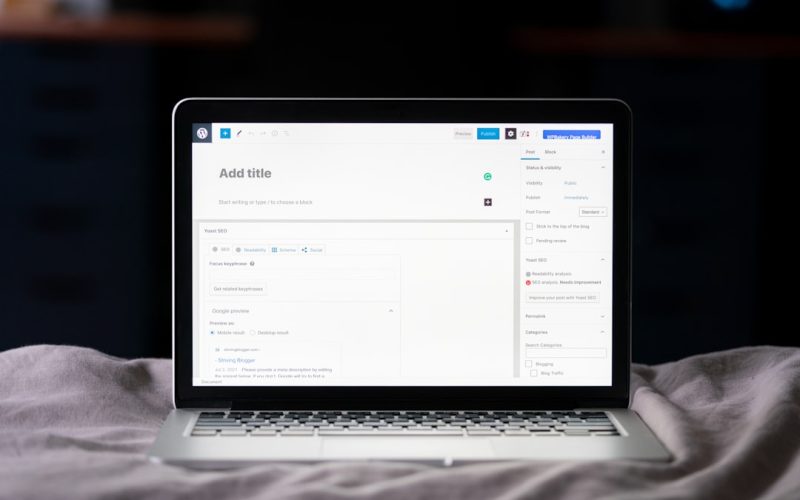Public speaking anxiety is a common experience that many individuals face, including myself.
The mere thought of standing in front of an audience can trigger a whirlwind of emotions, from nervousness to outright fear.
I have often found myself grappling with the fear of judgment, worrying about how my words will be received.
However, I have learned that acknowledging this anxiety is the first step toward overcoming it. By recognizing that I am not alone in this struggle, I can begin to reframe my mindset. Instead of viewing public speaking as a daunting task, I now see it as an opportunity to share my ideas and connect with others.
To combat my anxiety, I have developed several strategies that have proven effective over time. One of the most helpful techniques has been visualization. Before stepping onto the stage, I take a moment to close my eyes and imagine myself delivering a successful presentation.
I picture the audience engaged and responsive, which helps to alleviate some of the tension I feel. Additionally, deep breathing exercises have become a staple in my pre-speaking routine. By focusing on my breath, I can calm my racing heart and center my thoughts, allowing me to approach the podium with a clearer mind.
Table of Contents
ToggleKey Takeaways
- Practice deep breathing and visualization techniques to overcome public speaking anxiety
- Research and understand your audience’s demographics, interests, and needs to tailor your message effectively
- Craft a clear and concise message with a compelling opening, supporting points, and a memorable closing
- Use visual aids sparingly and strategically to enhance your message and engage your audience
- Maintain eye contact, use confident body language, and speak with conviction to engage with your audience confidently
Understanding Your Audience
Understanding my audience is crucial for delivering an impactful presentation. Each time I prepare to speak, I make it a priority to research who will be in attendance. This involves considering their demographics, interests, and expectations.
By doing so, I can tailor my message to resonate with them on a deeper level. For instance, if I know that my audience consists of industry professionals, I can incorporate relevant jargon and examples that will engage them more effectively. This not only enhances their experience but also boosts my confidence as I feel more connected to those listening.
Moreover, I have learned the importance of empathy in understanding my audience. By putting myself in their shoes, I can anticipate their questions and concerns. This perspective allows me to address potential objections or misunderstandings proactively during my presentation.
Engaging with the audience becomes a two-way street; I am not just delivering information but also fostering a dialogue that encourages participation and interaction. This connection transforms the experience from a monologue into a conversation, making it more enjoyable for both me and my listeners.
Crafting a Compelling Message

Crafting a compelling message is an art that requires careful consideration and creativity. When I sit down to outline my presentation, I focus on clarity and conciseness. My goal is to distill complex ideas into digestible points that are easy for the audience to grasp.
I often start with a strong hook—an intriguing fact or a thought-provoking question—that captures attention right from the beginning. This initial engagement sets the tone for the rest of my presentation and piques curiosity. In addition to clarity, I strive to infuse my message with passion and authenticity.
Sharing personal anecdotes or experiences related to the topic not only humanizes my presentation but also makes it relatable. When I speak from the heart, it resonates with the audience on an emotional level, creating a memorable experience. Furthermore, I ensure that my message has a clear structure, guiding the audience through each point logically. By summarizing key takeaways at the end, I reinforce the main ideas and leave them with something tangible to remember.
Utilizing Visual Aids Effectively
| Visual Aid | Effectiveness |
|---|---|
| Charts and Graphs | Helps to visualize data and trends |
| Diagrams | Clarifies complex concepts |
| Images | Enhances understanding and retention |
| Videos | Engages audience and demonstrates processes |
Visual aids can significantly enhance a presentation when used thoughtfully. In my experience, incorporating slides or props has helped clarify complex concepts and maintain audience engagement. However, I have learned that less is often more when it comes to visual aids.
Overloading slides with text or images can distract from my message rather than support it. Instead, I focus on using visuals that complement what I’m saying—simple graphs, impactful images, or concise bullet points that highlight key ideas. Moreover, I make it a point to practice with my visual aids before the actual presentation.
Familiarizing myself with the technology ensures that I can seamlessly integrate visuals into my speech without fumbling or losing my train of thought. During the presentation, I aim to maintain eye contact with the audience rather than reading directly from the slides. This approach fosters a stronger connection and keeps the audience engaged in what I’m saying rather than just what they see on the screen.
Engaging with Confidence
Confidence is key when it comes to public speaking, and I’ve discovered that engaging with my audience is one of the most effective ways to project that confidence. From the moment I step onto the stage, I strive to establish rapport by making eye contact and smiling at various members of the audience. This simple act creates an inviting atmosphere and encourages listeners to feel more connected to me as a speaker.
Additionally, I actively seek opportunities for interaction throughout my presentation. Whether it’s asking rhetorical questions or inviting audience participation through polls or discussions, these moments break down barriers and foster engagement. When I see nods of agreement or hear laughter in response to my anecdotes, it reinforces my confidence and motivates me to continue delivering my message with enthusiasm.
Handling Q&A Sessions

Handling Q&A sessions can be one of the most nerve-wracking aspects of public speaking for me. The unpredictability of questions can create anxiety; however, I’ve learned to view these moments as opportunities for deeper engagement with my audience. To prepare for potential questions, I often anticipate what might arise based on my topic and prepare thoughtful responses in advance.
During the Q&A session itself, I remind myself to listen actively and respond thoughtfully. If a question catches me off guard, I take a moment to gather my thoughts before answering rather than rushing into a response. This pause not only allows me to formulate a more coherent answer but also demonstrates to the audience that I value their inquiries.
Additionally, if I’m unsure about an answer, it’s perfectly acceptable for me to admit it and offer to follow up later with more information.
Managing Nervous Habits
Nervous habits can undermine even the most prepared speaker’s performance. I’ve noticed that when I’m anxious, I tend to fidget or speak too quickly—both of which detract from my message. To combat these tendencies, I’ve made a conscious effort to identify and manage them before they become distracting during my presentations.
One effective strategy has been practicing mindfulness techniques that help ground me in the moment. By focusing on my body language and posture before speaking, I can project confidence even when I’m feeling nervous inside. Additionally, I’ve found that incorporating deliberate pauses into my speech not only gives me time to collect my thoughts but also allows the audience to absorb what I’ve said.
These pauses create a rhythm in my delivery that feels more natural and engaging.
Practicing and Rehearsing
Practice is essential for mastering public speaking skills, and I’ve come to appreciate its value over time. Rehearsing my presentation multiple times allows me to refine my delivery and become more comfortable with the material. I’ve found that practicing in front of a mirror helps me observe my body language and facial expressions, enabling me to make adjustments as needed.
Moreover, seeking feedback from trusted friends or colleagues has been invaluable in honing my skills. They provide constructive criticism that helps me identify areas for improvement while also highlighting what I’m doing well. This feedback loop not only boosts my confidence but also ensures that I’m continually evolving as a speaker.
Using Body Language to Enhance Communication
Body language plays a significant role in effective communication, and I’ve learned how to harness its power during presentations. My posture conveys confidence; standing tall with open shoulders sends a message of authority and engagement. Additionally, using purposeful gestures helps emphasize key points and keeps the audience’s attention focused on me rather than just my words.
I also pay attention to facial expressions as they can convey emotions more powerfully than words alone. A genuine smile or an expressive look can create an emotional connection with the audience that enhances their overall experience. By being mindful of how I present myself physically, I can reinforce my message and create a more dynamic interaction with those listening.
Developing a Strong Presence on Stage
Developing a strong presence on stage is about more than just confidence; it’s about commanding attention through authenticity and energy. When I step onto the stage, I aim to embody enthusiasm for my topic while remaining true to myself. This authenticity resonates with audiences and fosters trust in what I’m saying.
To cultivate this presence further, I’ve learned the importance of pacing and movement during presentations. Rather than remaining static behind a podium, I move around the stage intentionally—engaging different sections of the audience while maintaining eye contact throughout. This dynamic approach keeps listeners engaged and creates an atmosphere of excitement around my message.
Leveraging Technology for a Seamless Presentation
In today’s digital age, leveraging technology can enhance presentations significantly when used effectively. I’ve embraced tools such as presentation software and interactive platforms that allow me to create visually appealing slideshows while incorporating multimedia elements like videos or audio clips. However, I’ve also learned that technology should serve as an aid rather than a crutch; relying too heavily on it can detract from my message if not managed properly.
To ensure seamless integration during presentations, I always conduct thorough technical checks beforehand—testing equipment and ensuring compatibility with any devices I’ll be using. In conclusion, public speaking is an invaluable skill that requires practice and dedication to master fully. By overcoming anxiety, understanding audiences, crafting compelling messages, utilizing visual aids effectively, engaging confidently, handling Q&A sessions gracefully, managing nervous habits, practicing diligently, using body language strategically, developing a strong presence on stage, and leveraging technology wisely—I have transformed public speaking from a source of fear into an empowering opportunity for connection and communication.
If you’re looking to enhance your public speaking skills as a WordPress expert, it’s also crucial to ensure that your website reflects your expertise and professionalism. A well-designed website can serve as a powerful tool to support your public speaking engagements by showcasing your work and providing a platform for your audience to connect with you. For insights on how to elevate your website, consider reading the article on becoming an Expert WordPress Designer in Nottingham. This article offers valuable tips on improving your website’s design and functionality, which can complement your public speaking efforts by enhancing your online presence.
FAQs
What are public speaking skills?
Public speaking skills refer to the ability to effectively communicate and present information to an audience in a clear, confident, and engaging manner.
Why are public speaking skills important for a WordPress expert?
Public speaking skills are important for a WordPress expert because they often need to present their work, ideas, and solutions to clients, colleagues, or at conferences. Effective communication can help them showcase their expertise and build credibility in the industry.
How can a WordPress expert improve their public speaking skills?
A WordPress expert can improve their public speaking skills by practicing regularly, seeking feedback from peers, joining public speaking clubs or workshops, and studying successful speakers. They can also work on improving their body language, vocal delivery, and storytelling abilities.
What are some tips for delivering a successful public speaking presentation as a WordPress expert?
Some tips for delivering a successful public speaking presentation as a WordPress expert include knowing the audience, organizing the content effectively, using visual aids such as slides or demos, and practicing the delivery to build confidence.
Are there any online resources or courses available to help WordPress experts improve their public speaking skills?
Yes, there are numerous online resources and courses available to help WordPress experts improve their public speaking skills. These include platforms like Coursera, Udemy, and LinkedIn Learning, which offer courses specifically tailored to public speaking for professionals in the tech industry.




